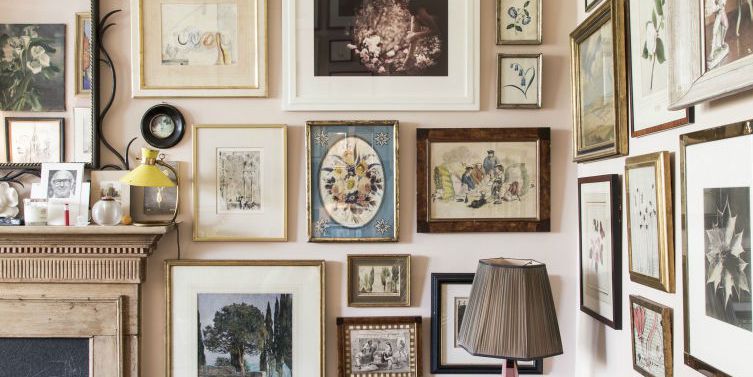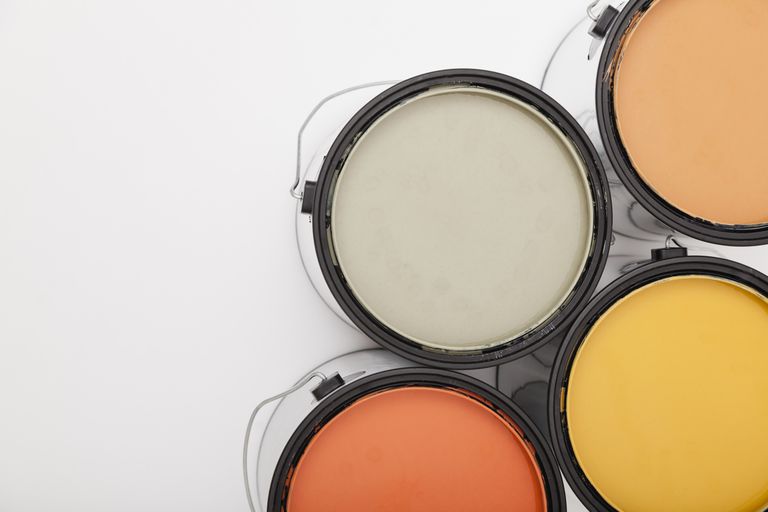How To Use PRINTABLES To Decorate Your Space
Hi guys…I’ve been reading up on what you should consider when you want to help others understand how to use your products and I realize that I didn’t really give ideas on how to use PRINTABLES, POSTERS, ABSTRACTS OR WATERCOLOUR ART in our spaces. There are so many ways to decorate one’s home, office or personal space. I decided to attempt at helping you decide how to decorate your space with some of the art I offer as a starting point. I will go through the process based on you liking a piece of Art but not being sure how to incorporate it into your home.
Get your printer to print your poster and WHALA!!!
There's nothing more depressing or empty looking than a blank wall. But decorating with art can be scary, so you might never even begin. Displaying artwork is a great way to spruce up your walls, create conversation pieces and create a flow to the decor of your home. No matter the budget, no matter the taste, you can decorate your home with art and paintings to add character and panache.
Sometimes, I know one can barely afford groceries, much less fork out big bucks for wall art. Even if you don’t have a dime to spare, you don’t need to live with blank walls. It’s easy to decorate your space using links to my inexpensive or free wall art printables and using totally inexpensive wall art ideas you can make a major impact in your home, or personal space:
By following some simple guidelines, you can hang art and paintings around your house without it being overwhelming or distracting. Artwork doesn't have to dominate your rooms; it should enhance them.
As I mentioned you may like some of my pieces or printables, or a piece of Art you saw somewhere, so lets check out these quick artwork do's and don'ts that'll save you time and effort and hopefully help you get over any fears you may have.
DOs and DONTs
DON'T think that art has to be expensive. You can hang gallery walls of family photographs or mount prints or posters that are very inexpensive, the only cost might be getting your Printer to print them a particular size for you and buying the art hook to mount them. If you want to spend a little more then buy some inexpensive frames and place the print in that to make look more glamorous. The room on the left ate some framed prints, drawings, and small photos.
Place your family photos in frames, inexpensive deorating.
Hanging your Family Photos all over your walls with a plan. www.gafra.org
DO use your walls as a showcase for your own photographs. Have your photos blown up and then use a spray adhesive to mount them on a piece of foam core. Or you can place double sided tape at the back and stick them on the wall as is.
DON'T hang artwork too high. The center point of either a single picture or a grouping of works should be at eye level.
DO hang art in every room in the house. Don't forget about the dining room, bathroom and even the mudroom.
DON'T hang a tiny piece on a big wall. If you have a small piece you want to hang put it in a frame that has a large mat or if you have a few small prints, place them in a set of three vertically one on top of the other (2” or 3” space between) or horizontally with the same spacing as mentioned.
DO use picture-hanging hooks rather than nails or screws. They can take a large amount of weight (up to 100 pounds for some sizes). Use two hooks per piece because it helps it remain level.
DON'T try to hang art by yourself. It's always better to have at least two people so one can hold it in place and the other can step back and make sure the placement is correct.
DO treat several pieces as one unit during the hanging process.
Let your Art cover the walls but stay 2-3 ins apart. www.gafra.org
Don’t hang your paintings low, must be at eye level. www.gafra.org
DON'T hang pieces too far apart from each other. Approximately two inches (sometimes less) on either side and below and above is enough space.
DO plan out a photo wall in advance. Place them on the ground in front of the wall and play around with the arrangement until you find one that satisfies you.
DON'T forget about balance. Don't hang all the large pieces in one area and all the small ones in another. The same goes for similar frames. Mix things around until you feel they're visually balanced.
DO lean artwork against a wall in some areas. Guess what? You don't actually have to hang your art. It's 2019—feel free to lean that bad boy against a wall. A piece sitting on a console table or mantle leaning against the wall can look very stylish. Layer a few pieces together for a striking display.
DO Hang Low (Or Don't Hang at All!)
But if you do want to hang the work, let's get down to basics. The bottom of the work (or its frame) should only be 8-16 inches above your sofa or table. That's right, hang low. You want to position the work so that the heart of the piece is at eye level, and unless you're Michael Jordan, you're going to have to lower your hanging expectations.
If you're planning to hang multiple smaller artworks in columns and/or rows, stick to the same guideline: start the lowest row only 8-16 inches above your piece of furniture. This will help create a unified design statement.
Look at Me artwork for your wall. Pop art that can look great on your wall. www.gafra.org
ADDITIONAL TIPS
Scale
An important factor when decorating your home with artwork or paintings is the scale of the item in relation to the room. Wherever you decide to place the art, it needs to fit into the relative scale of the rest of the room or area so it doesn't distract or get hidden by other items. For example, when hanging artwork over a couch or other piece of furniture, a good rule is to find a painting or piece of art that is roughly the same size as the piece below it or next to it, creating a sense of balance and harmony. You can also combine smaller pieces to scale. Whether using three-dimensional pieces or hanging art, you can use the "Rule of Three" to fill in space on the wall and give a sense of scale. For example, for space over a couch or other piece of furniture, use three pieces of art that are roughly the same size, such as three portraits, paintings or hanging sculptures. Arrange them so that they work together and fill the space that a single, larger print might have covered, while being in scale with the piece of furniture they counterbalance.
Spacing
While having artwork and paintings in your home is good, over-crowding them is bad. Leave plenty of space between pieces and give them room to stand on their own without being out of context. Unless pieces are intimately connected by subject matter, it's best to keep them separate. For example, if you have 20 pieces of art hanging on a wall, your room loses focus and the art itself becomes a blur rather than a focus. Artwork should serve as an accent to the room as a whole.
Motifs
Selecting a motif, or pattern of style, is a good way to decide what type or art to put in one room or area. For example, in the kitchen you could have a food motif, where all the art displayed has something to do with food. This way, you have a theme that connects via the art and the function of the room itself. Your motif could even stretch through the whole home, if you so desire.
Matching
While you should never buy a painting just because it matches your couch, you should take into consideration the materials and dominating colors of the artwork you display before hanging it or placing it. Try to correlate color patterns or other styles with existing elements in the room. For example, in a red room with a lot of red and brown accent pieces, a painting of red and brown chickens or a tapestry with those colors stand alone as art and complement the rest of the room.
Use a soothing colour.www.gafra.org
Check the colours in the room and link the print with the same colours or lighter versions.
A Colour for Every Mood
Choose colors based on the mood you want to set in each room. For example, gray is calming, so consider basing your bedroom design or theme on different gradients of gray. Yellow sets a welcoming, cheerful mood, so a piece of artwork that has a bright yellow hue is perfect for the living room. And works that scream with red or orange are amazing in the dining room, and will spark lively discussions between dinner guests.
Lastly, we all remember from science class that white is the presence of all colors, but that doesn't mean white will bring personality to a room. Quite the opposite! There's a reason gallery spaces have white walls—to make you ignore the walls and focus on the artwork. So if you buy white art, make sure the wall it hangs on is colorful.
Design a Room Around a Piece of Art
To begin, find your focal point: Walk into the room and identify where your eyes land first; this is the perfect place for a piece of statement artwork, and you can base the rest of the room's design on it. It’s important that the painting be hung at eye level (when standing) to ensure that the viewer’s gaze falls on it effortlessly.You can easily pick out one of the colors in your central piece of artwork and stream it throughout the room—an accent pillow here, a lampshade there. The theme doesn't have to take over the design, but it will help the eye connect all the pieces in the room, and create a unifying statement in your design.
Remember, you can always use your art to mimic the life of the room. Put simply: If the artwork is of food, hang it in the kitchen, if it's of a group of friends laughing, hang it in the living room.
Don't Forget the Bathroom!
Think of your bathroom as a gallery—the perfect place to hang your quirkiest art pieces. Get a little crazy and show your personality. Some of the best art can be a bit uncomfortable at first glance, but once you really see it, you won't be able to stop admiring it. The added bonus here is that your guests will get a kick out of the works in a private setting (and they can stare for as long as they want!).
Placing Art Prints or Posters behind your Sofa is a great look.www.gafra.org
SUMMARY
How Do You Put ART in your House
1. 2. Make sure your art fits your particular space. ...
2. Go for a gallery wall. ...
3. Hang art in a straight line or a grid. ...
4. Hang art at eye level. ...
5. Turn your wall into your child's personal art gallery. ...
6. Incorporate functional elements into your art wall. ...
7. Consider using lighting as art. ...
8. Consider your background.
Selecting Wall Art by Colour
1. Your most significant piece of artwork should have a background colour that matches your wall colour.
2. Reference the colour wheel when selecting complementary shades.
3. Use the same colour but in different shades. ...
4. Only choose wall art if that exact shade is already in your room.
Basics of this style include:
1. Your most significant piece of artwork should have a background colour that matches your wall colour.
2. Reference the colour wheel when selecting complementary shades.
3. Use the same colour but in different shades. ...
4. Only choose wall art if that exact shade is already in your room.
9 Ways to Personalize Your Bedroom
1. Display Your Photos. Pictures of family, friends, pets or just scenes you like belong on your walls and dressing tables. ...
2. Choose a Theme. ...
3. Add an Area Rug. ...
4. Hang Artwork. ...
5. Include Scents. ...
6. Stick With Soothing Colors. ...
7. Put Your Signature on Wall Treatments. ...
8. Keep Furniture to a Minimum.
Get this PRINTABLES HERE It will look amazing in your Living Room behind your couch, all 3 pieces.
Place this “See Me” Printable on your wall.
Get your FREE DOWNLOAD: An EASY GUIDE on “How to Paint an Abstract” OR my LOOK-BOOK
Get your personal copy of this ebook HERE!!
JOIN MY LIST
Have some Mandalas printed and have your Living Room look Amazing.
References:
ELLE by Cristina Salmastrelli
WIKI how
PRO.COM
The Spruce.com



















